Patchy Hair Re-growth: Prevention & Correction
Intense pulsed light (IPL) devices and Diode lasers are now available for home use to remove unwanted hair.
These consumer devices use flashes of broad-spectrum light and lasers to target the melanin in hair follicles, disabling them from future hair regrowth.
Using at-home laser hair removal devices can provide convenient, non-invasive hair removal without regular salon appointments.
However, achieving smooth, consistent results with at-home IPL can be challenging.
One common problem is patchy hair regrowth, where hair grows back unevenly in some spots after treatment.
This happens when the IPL pulses fail to reach and disable every hair follicle.
Patchiness is frustrating and can be confusing to deal with.
The causes of patchy IPL results often come down to several factors.
As an at-home user, following best practices will get you the best results from your personal IPL device.
With some knowledge of how these devices work, attention to protocol, and realistic expectations, you can minimize patchy regrowth.
This guide will cover why patchiness happens and give you tips to get optimal, smooth hair removal with at-home laser and IPL.
Ask the Expert: What causes patchy regrowth in IPL hair removal? What can I do to prevent it?
BY ANGELICA ROSSINO, MEDICAL AESTHETICIAN & LASER TECHNICIAN
The underlying causes of patchy hair regrowth are generally the same whether IPL is done professionally or at home.
We’ll recount them all in detail in the next section, but each of them can be caused by one or a combination of these factors:
- Operator/User Technique – The effectiveness of your IPL treatment depends on the skill and actions of the person performing it. Missed spots can occur due to inconsistent flash delivery, insufficient overlap between pulses, and improper treatment intervals. While you can rely on the expertise of professionals in clinics, you will mostly perform at-home IPL by yourself. With time and practice however, you can learn proper handpiece positioning, optimize your movements, and choose the correct treatment parameters of your device.
- Device Capability – These refer to problems or failures associated with the IPL device itself, including issues with light emission, energy output, calibration, and safety features. Device-related factors can impact treatment outcomes due to inconsistent performance of the device during treatment sessions.
- Biological Factors – Natural hair color, density, hormones, genetics, skin tones, and hair cycles vary across your body. These can influence how you respond to hair removal treatments. Understanding your specific biology helps set realistic expectations.
There is no ‘one-size fits all’ when it comes to laser hair removal.
The best IPL for you will be the one most compatible with your body and lifestyle.
With reasonable expectations, consistency, and the right device, your risk of patchiness can be minimized and give you more even results.
Key Factors That Contribute to Patchy Hair Regrowth
Inconsistent Energy Delivery/Uneven Distribution of Light
Major Factors: Operator/User, Device Build, Technology Used
If your IPL device is not applied evenly and consistently at the right power level across the treated area, some follicles may receive insufficient energy.
This is more common with at-home devices that are more difficult to use.
This may happen due to the following:
Incorrect positioning, angle, & contact/pressure between the handpiece and your skin
Improper handpiece technique during treatment is a major cause of uneven results and patchy regrowth with IPL hair removal.
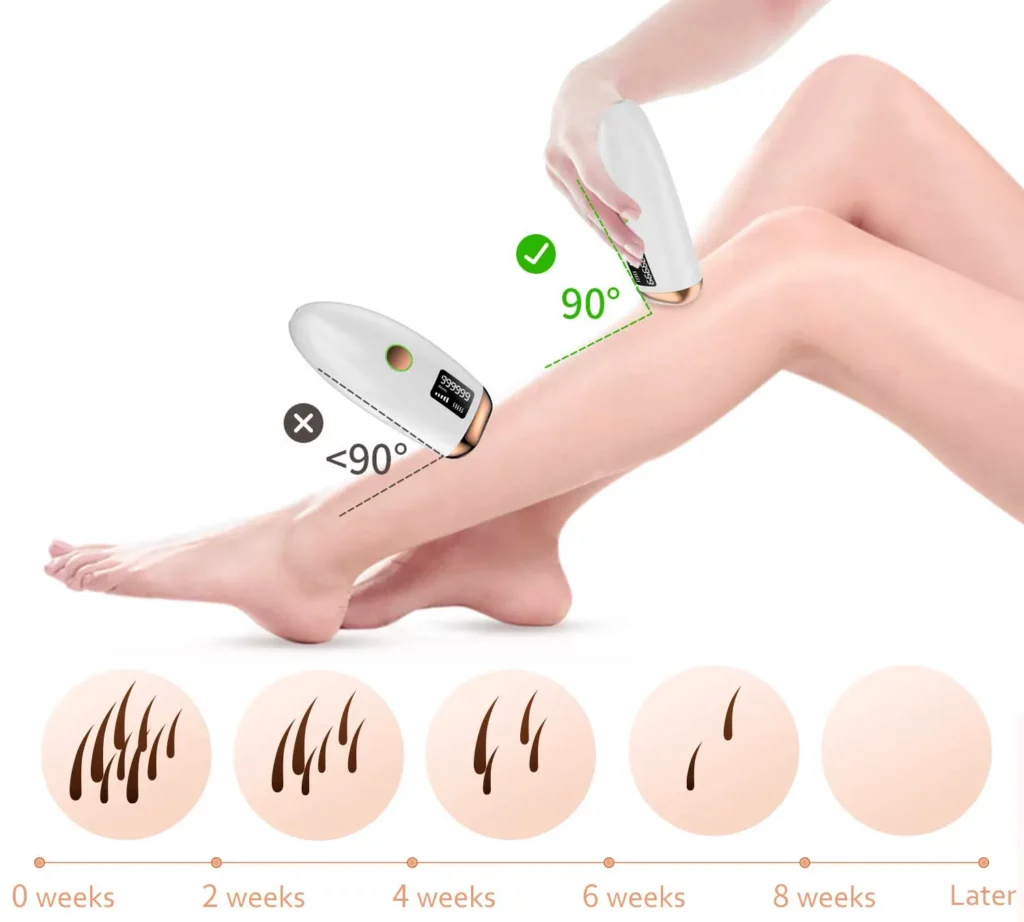
Maintaining firm consistent contact and perpendicular angle of the handpiece against the skin is crucial for uniform light delivery.
However, certain factors make this challenging:
- Curved body areas like the bikini line, underarms, and neck are harder to position properly. The handpiece angle often slips on these contours.
- Applying uneven handpiece pressure while moving across the skin leads to some areas receiving more energy than others.
- Failing to keep the device head flush with the skin at a 90 degree angle causes light scattering and uneven absorption.
- Without full flat contact, some hairs may be missed while others get excessive energy resulting in patchiness.
- Most IPL devices have contact or pressure sensors to help operators maintain proper technique. But manually checking for even contact is still important.
Adequate training and practice using the device on curved surfaces can help operators learn to maneuver the handpiece correctly across all areas for consistent IPL results.
Taking the time to check handpiece angle and pressure is key.


Laser Tech Notes: One of our testers, Lyra, with the Braun Silk-Expert Pro 5. Doing it wrong vs. doing it right.
Moving the handpiece too quickly or slowly over the skin
The speed at which the operator moves the handpiece across the skin can also impact the distribution of light.
Certain areas may receive insufficient or excessive light energy, leading to patchiness in the treatment results.


Laser Tech Notes: I like the Ulike Air3. We’ve tested it and it’s a solid device, but this “whole body in 10-minutes” is marketing speak.
Yes, you can do it in 10 minutes but you’re going to be patchy as hell.
Just allot 30-40 mins for your IPL so you can do it carefully.
(That’s a hard sell we know, but you’ll only do it for a few weeks. You’ll get faster with practice too, so don’t rush it!)
Insufficient coverage resulting in missed spots
This means that not all areas targeted for hair removal receive the right amount of laser energy.
Follicles directly under the flashes are treated, but those adjacent are not.
Only the missed hairs resume their growth cycle, resulting in uneven re-growth.

Laser Tech Notes: Full Coverage vs. Overlapping vs. Missed Spots

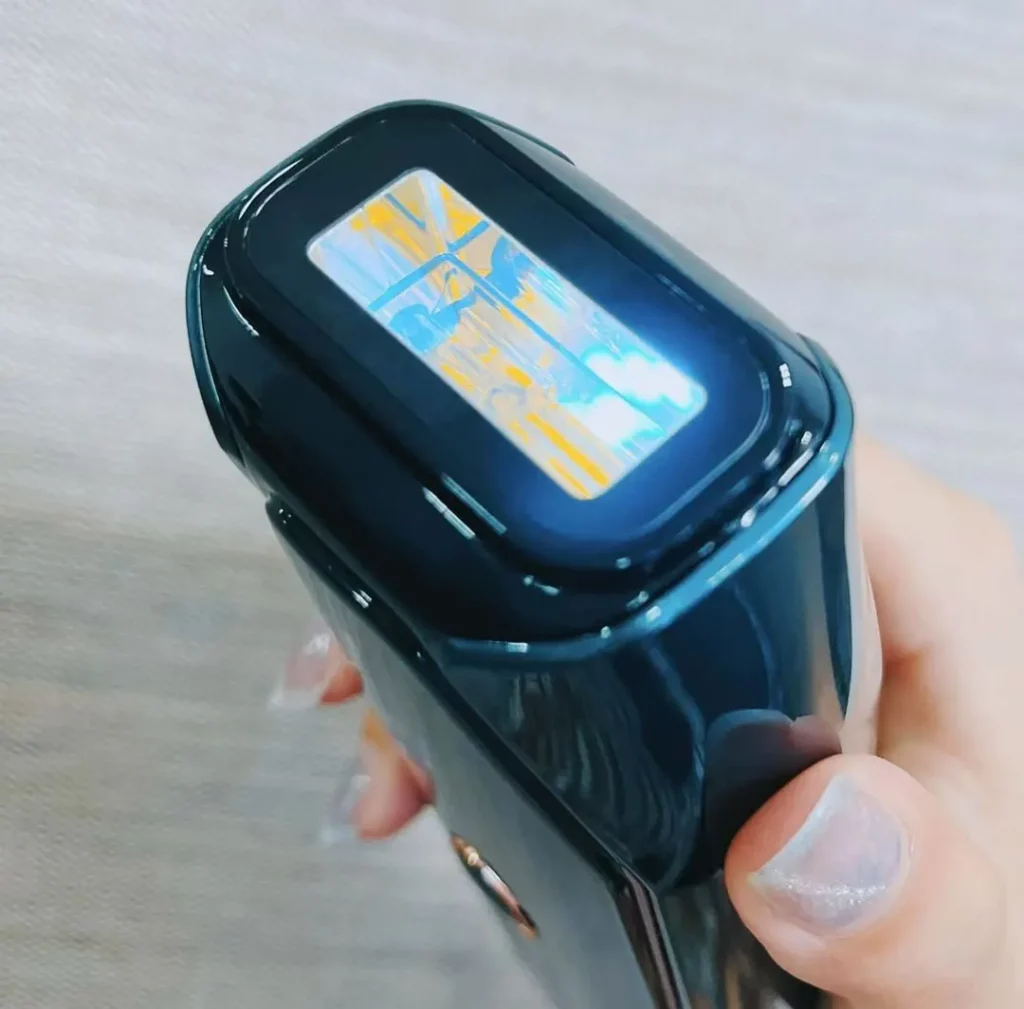
Laser Tech Notes: Examples of nice big, rectangle-shaped flash windows, courtesy of the JOVS Venus Pro & JOVS X 3-in-1 IPL.
This, combined with fast pulses, can make treatments quick and easy.
Complete coverage and accurate alignment of flashes are crucial in laser hair removal to ensure uniform treatment across the targeted areas.
This approach promotes consistent energy delivery, preventing patchy results.
Poorly built IPL devices
Your IPL device's power output and specs can limit its effectiveness for full hair removal.
Some home devices cannot deliver energy effectively to disable hair on all body areas.
Poorly built devices can have faulty quartz lamps and machinery that can give out inconsistent flashes.
Upgrading your device could help.
Well-engineered, quality devices are likely to have better performance.
Device malfunction or degraded components in the IPL device
These can also cause uneven light emission and patchy results.
Issues may include:
- Fluctuations in light intensity or pulse duration
- Deterioration of the flash lamp or filters over time
- Improper calibration resulting in inaccurate settings
- Limited energy output in home devices unable to disable coarse hair
Routine maintenance and inspection can help prevent malfunctions.
Upgrading to higher-powered devices or better technology can also improve consistency.
Solutions:
Proper technique is crucial
You should maintain firm contact, consistent speed, and adequate overlap between pulses to ensure even coverage.
If this is new for you, don’t rush it.
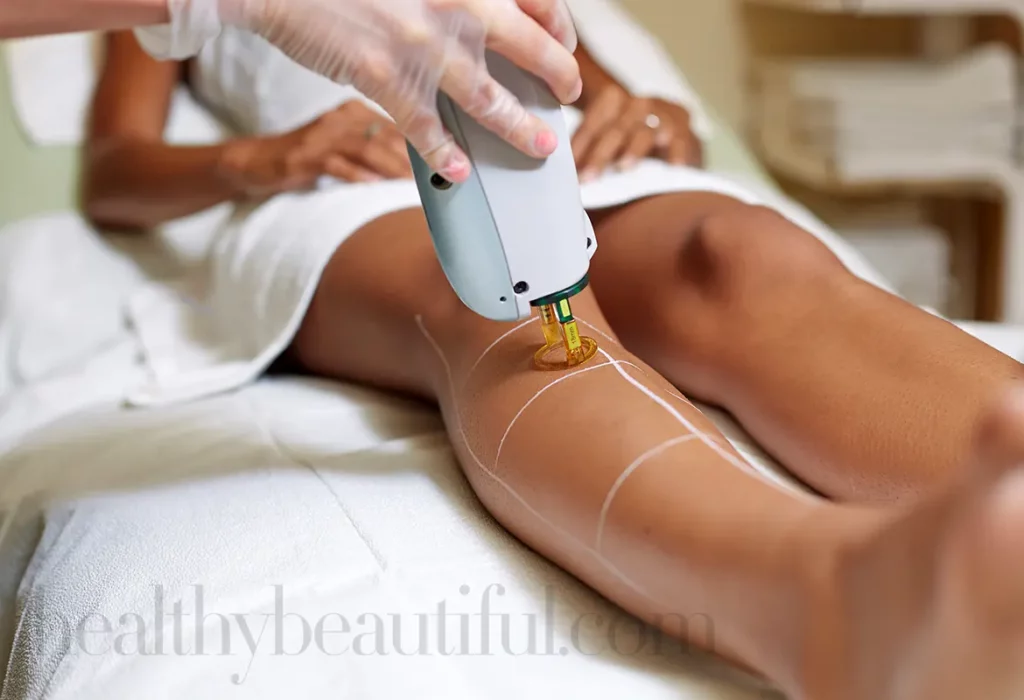
Laser Tech Notes: At our clinic we use white marking pens to map a grid on the area we’re about to treat.
This serves as a visual guide when we do the HR or stamping method. You can use the same or a white eyeliner if you already have one.
You can also use it to mark out moles, birthmarks, etc. so it won’t burn.
Regularly checking for missed spots during treatment can also help ensure complete coverage.
You’ll need laser safety glasses so you can look directly at what you’re working on.
With diligent use of at-home IPL, it is possible to achieve relatively even coverage.
But this requires patience, care, and attention to technique.
Diode Laser > OPT > IPL
Here's a brief comparison of their precision and efficacy:
- Diode laser is the most precise and effective at-home hair removal method. It uses a single wavelength of light to target the melanin in the hair follicle, resulting in more efficient and targeted energy delivery.
- IPL uses a broad spectrum of light to target the melanin in the hair follicle. While it can be effective for hair removal, it is less precise than diode laser and may require more treatment sessions to achieve desired results.
- OPT is a newer technology that combines the benefits of both diode laser and IPL. Unlike IPL, where light is scattered, OPT™ sustains the energy pulse as it penetrates the skin to the hair.
Laser technology (focused beam) and OPT (focused IPL) generally offer greater precision and have more consistent energy output compared to regular IPL (scattered light).
This precision and consistency can help minimize the risk of uneven treatment and patchiness.

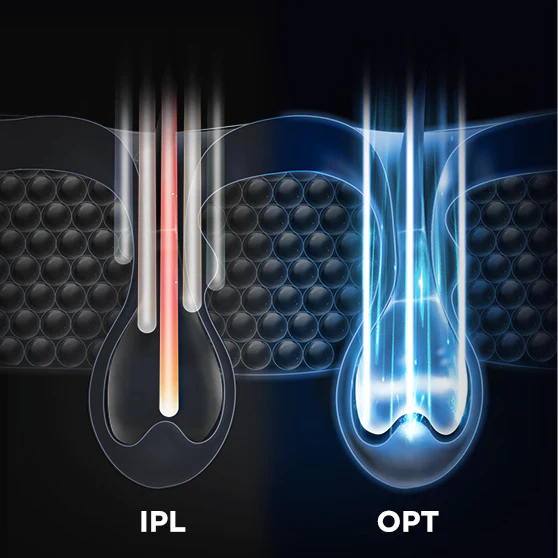
Laser Tech Notes: In terms of precision and efficacy, diode laser > OPT > IPL.
Note that this alone does not make your results foolproof.
You still have to be diligent in your flashing technique during your treatments.
Devices that use Diode Laser: ViQure EpiPro, Tria 4x
Devices that use OPT technology: JOVS X 3-in-1 IPL, Bosidin Pioneer-Pro, JOVS Venus Pro, Bosidin Pioneer
Devices that use IPL: Majority of everything else.
Inadequate Settings
Factors: Operator/User, Device Specifications
Using incorrect parameters like fluence (energy level), pulse duration, or wavelength selection can result in uneven treatment and patchiness.
Clinics have professionals who skillfully adjust these parameters according to individual requirements.
However, IPL devices designed for home use come with fixed parameters.
It makes them easy to operate but may not provide optimal results for everyone.
Some common ways inadequate settings cause patchiness include:
Incorrect Fluence
(Adjustable in Devices)
Fluence refers to the amount of energy delivered per unit area of skin during IPL treatment.
If the fluence is set too low, it may not provide enough energy to effectively target your roots.
As a result, certain areas may not receive sufficient treatment, leading to patchiness.
Mismatched Settings for Skin Tone
(Adjustable in Devices)
IPL treatments should be tailored to the individual's skin tone and condition.
Using settings that are not appropriate for the patient's skin type can increase the risk of adverse effects such as burns or post-inflammatory hyperpigmentation.
Additionally, mismatched settings may not effectively target the desired skin concerns, leading to patchiness in the treatment results.
Failure to Adjust Settings for Different Areas
(Adjustable or Added Feature in Devices)
Different areas of the body may require adjustments in IPL settings based on factors such as skin thickness, pigmentation, and sensitivity.
Denser hair or darker skin requires higher fluence.
Not adjusting appropriately can result in uneven clearance.
Lack of Cooling
(Added Feature in Devices)
Insufficient cooling between paPulse duration refers to the length of time that the IPL device emits light during each pulse.
The pulse needs to be of sufficient duration to heat the follicles and damage them.
Overly brief pulses may not raise the temperature enough for permanent hair reduction.sses can lead to selective overheating of darker areas.
This can create a patchy pattern of damage.
Inappropriate Pulse Duration
(Fixed in Devices)
Pulse duration refers to the length of time that the IPL device emits light during each pulse.
The pulse needs to be of sufficient duration to heat the follicles and damage them.
Overly brief pulses may not raise the temperature enough for permanent hair reduction.
Incorrect Wavelength Selection
(Fixed in Devices)
Different chromophores in the skin absorb light at specific wavelengths.
Therefore, selecting the appropriate wavelength is crucial for targeting the intended skin concerns.
If the wrong wavelength is used for a particular condition (e.g., targeting melanin with the wrong wavelength for hair removal), it can result in suboptimal treatment outcomes and patchiness.
Solutions:
Your IPL device must be calibrated properly and appropriate parameters selected for each use case.
Taking skin type, hair density, and treatment area into account is crucial for optimized settings and uniform results.
If you have a simple IPL device with minimal controls, the only things you can really adjust is the energy fluence and making sure you match it to your skin tone and anatomical area.
Aside from the ViQure EpiPro, which is a hybrid salon and home device, the rest of the settings are fixed and usually set to the best it can.
There are also certain devices that can auto-adjust or have settings for particular body parts to make it easier.
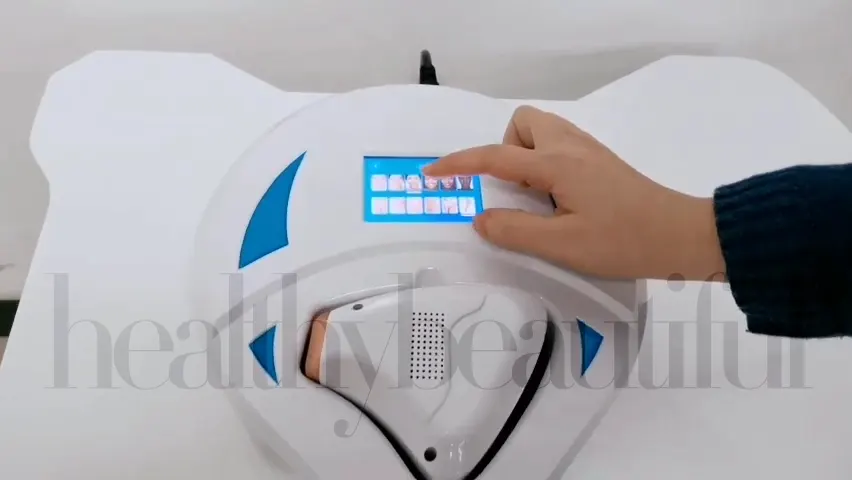
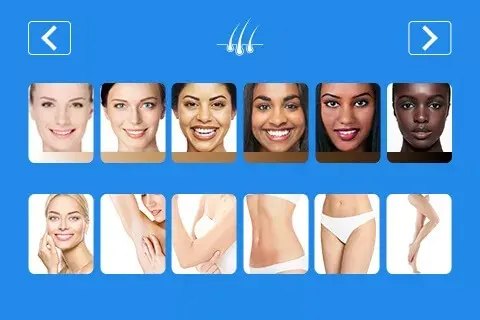
Devices with Additional Professional Controls + Cooling + Body Part Specs: ViQure EpiPro
Devices with Body Part Specifications: JOVS X 3-in-1 IPL, Bosidin Pioneer-Pro, JOVS Venus Pro, Bosidin Pioneer
Devices with Skin-tone Adjustors: The Beam IPL, Braun i-expert, Braun Pro 5, SmoothSkin Pure FIT
Natural Variations in Hair Density & Thickness
Factors: Biological, Device Specifications
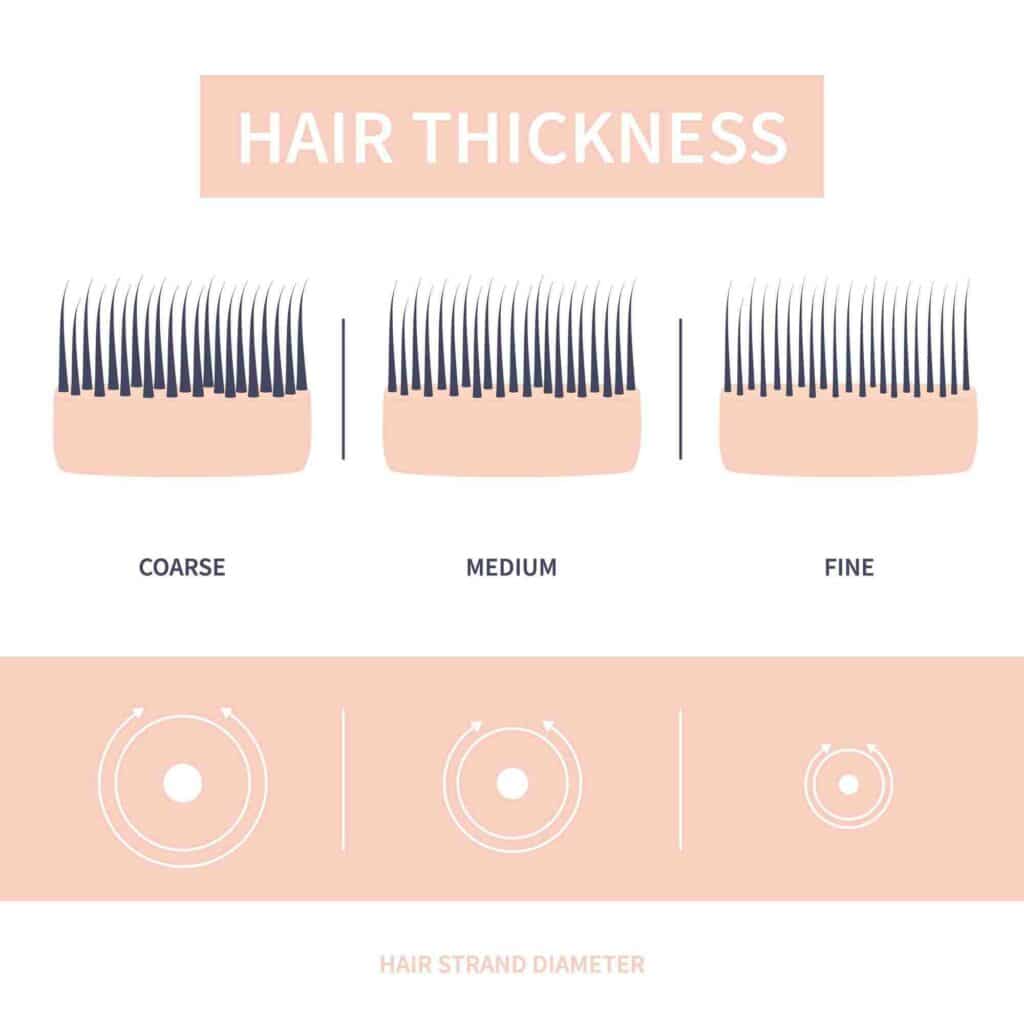
Achieving better results with your laser hair removal requires an understanding of the natural variations in hair density and thickness across different body areas.
Here's why:
Body Region-Specific Hair Density
Hair density varies significantly across different body regions.
For example, the density of hair on the legs may differ from that on the underarms or bikini line.
IPL devices can be designed to address these variations, but you should be aware that the effectiveness may differ based on the area being treated.
Individual Variation
Each person's body is unique, and individuals may naturally have different hair densities in the same region.
Some areas may have thicker or more concentrated hair, while others may have finer or sparser hair.
You should consider these natural variations when using IPL devices to ensure adequate coverage and treatment.
Hair Growth Patterns
Hair growth patterns can vary from person to person.
While IPL is effective in targeting actively growing hair, users should be aware that hair density may fluctuate due to individual growth cycles.
Consistent and repeated treatments help address hair at various stages of the growth cycle, promoting more even results.
Consistent Treatment Sessions
To prevent patchy regrowth, it's crucial for users to adhere to a consistent treatment schedule.
Regular sessions are essential to target hair during different growth phases and maintain a more uniform reduction in hair density over time.
Solutions:
Here's what you should know:
- Denser hair requires more energy – IPL works by emitting light energy that is absorbed by the melanin in the hair follicle. The more dense the hair, the more melanin there is to absorb the light energy. This means that areas with denser hair may require higher energy levels to achieve effective hair removal.
- Thicker, coarser hair also requires more energy – Thicker, coarser hairs have larger hair shafts and bulb diameters which require more energy to heat up and destroy the follicle. If the IPL fluence setting is too low for thick coarse hairs, it may only damage the shaft temporarily instead of destroying the entire follicle, leading to faster regrowth.
- Thin, Vellus hair may not respond well – On the other hand, areas with thin or fine hair may not respond as well to IPL treatment. This is because there is less melanin in the hair follicle to absorb the light energy. Multiple treatment sessions may be required to achieve desired results. This can increase the risk of patchy hair regrowth, as some hair follicles may be more resistant to treatment than others.
- Hair density can vary across the body – It's important to note that hair density can vary across different areas of the body. For example, the underarms may have denser hair than the legs or bikini line. This means that different areas may require different energy levels and treatment protocols to achieve optimal results.
- Hair density can affect treatment time – The density of the hair can also affect the treatment time required for IPL hair removal. Areas with denser hair may require longer treatment times to ensure that all hair follicles are effectively targeted.
To optimize IPL hair removal outcomes, it's important to carefully assess the treatment area and adjust the IPL settings based on the specific characteristics of the hair being treated, including hair density.
Overall, setting the IPL device to higher fluence for coarser, thicker hairs and lower fluence for finer hairs helps achieve safe and effective hair removal tailored to each area being treated.
You can do this on your own but also get specialized IPL devices for distinct body parts.
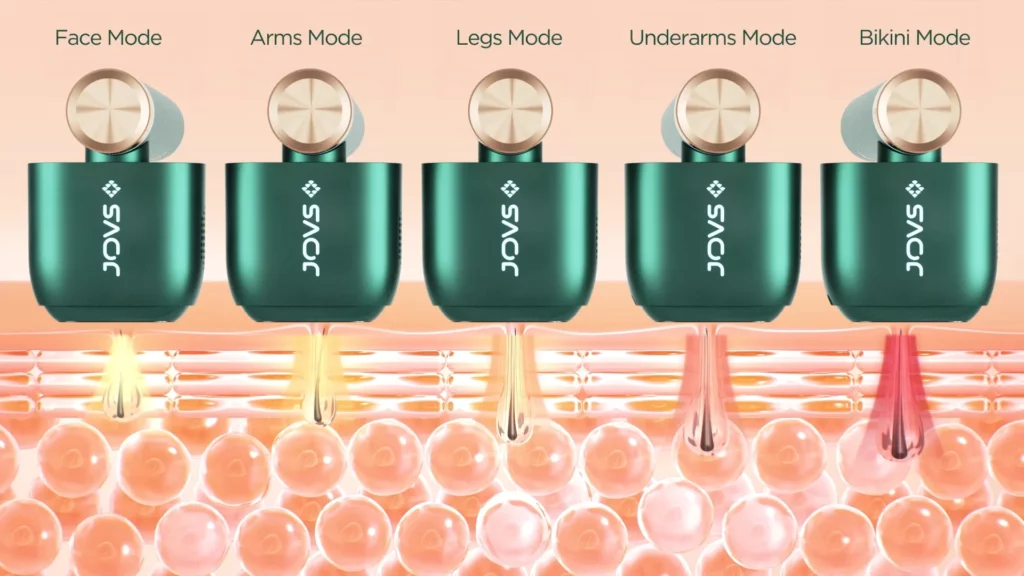
The JOVS Venus Pro with different Body-Mode functions.
This has several advantages, including:
- Optimized parameters tailored to specific characteristics
- Enhanced precision for varying sensitivities and contours
- User-friendly designs for convenient application
- Safety features relevant to each area
- Improved treatment efficiency, and
- Able to meet diverse consumer needs
However, this convenience comes with a higher price tag.
Devices with Additional Professional Controls + Body Part Specs: ViQure EpiPro
Devices with Body Part Specifications:JOVS X 3-in-1 IPL, Bosidin Pioneer-Pro, JOVS Venus Pro, Bosidin Pioneer
Improper Treatment Intervals
Factors: Operator/User
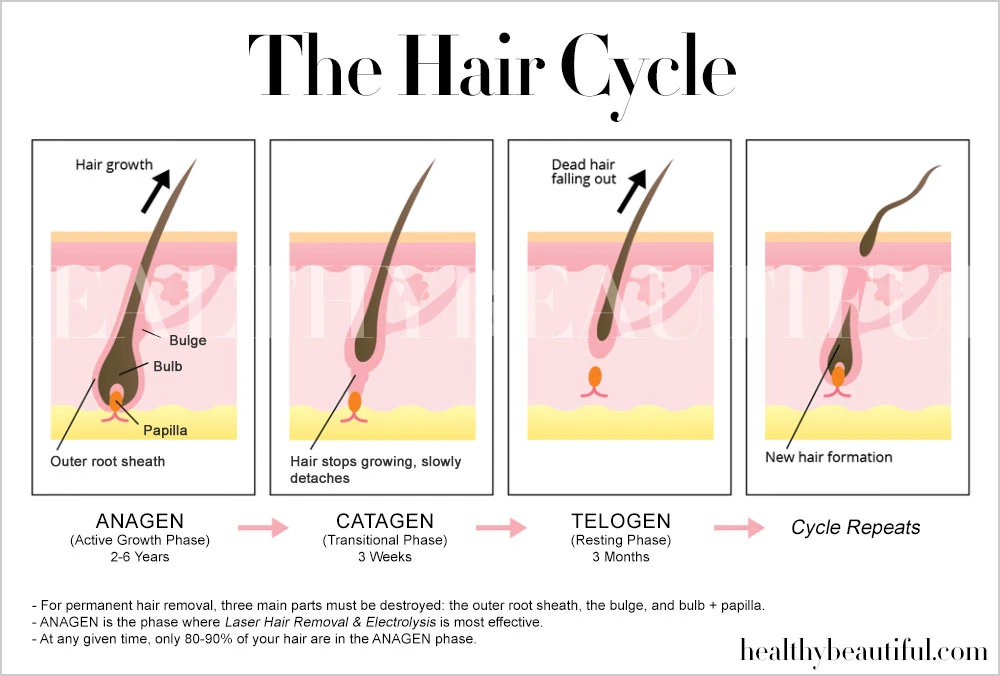
The variations in hair cycle duration across different parts of your body contribute to the differences in hair length, thickness, and growth rates.
This is why consistency is very, very important in laser hair removal.
IPL only affects follicles that are in the active growth phase. If treatments are spaced too far apart, some follicles may be skipped in the inactive phase and regrow normally later.
Regular and consistent use of the device is essential.
Users should follow the recommended treatment schedule to target hair during various growth phases and avoid patchiness.
Solutions:
Don’t miss a schedule.
The goal is gradual, consistent damage until your hair is so weak it can no longer grow normally.
Hair can be surprisingly resilient, so don’t give your roots a chance to recover.
A few days give or take wouldn’t matter much, but don’t let it slide into weeks.
Keep it on your calendar, or use an electronic reminder. (If you use Gmail, you can create a Google Task that reminds you to do it every x days/weeks/months.)
Related: Ask an Esthetician: How Often Can You Do IPL/At-Home Laser Hair Removal?
Uneven Hair Color Across Your Body
Factors: Biological
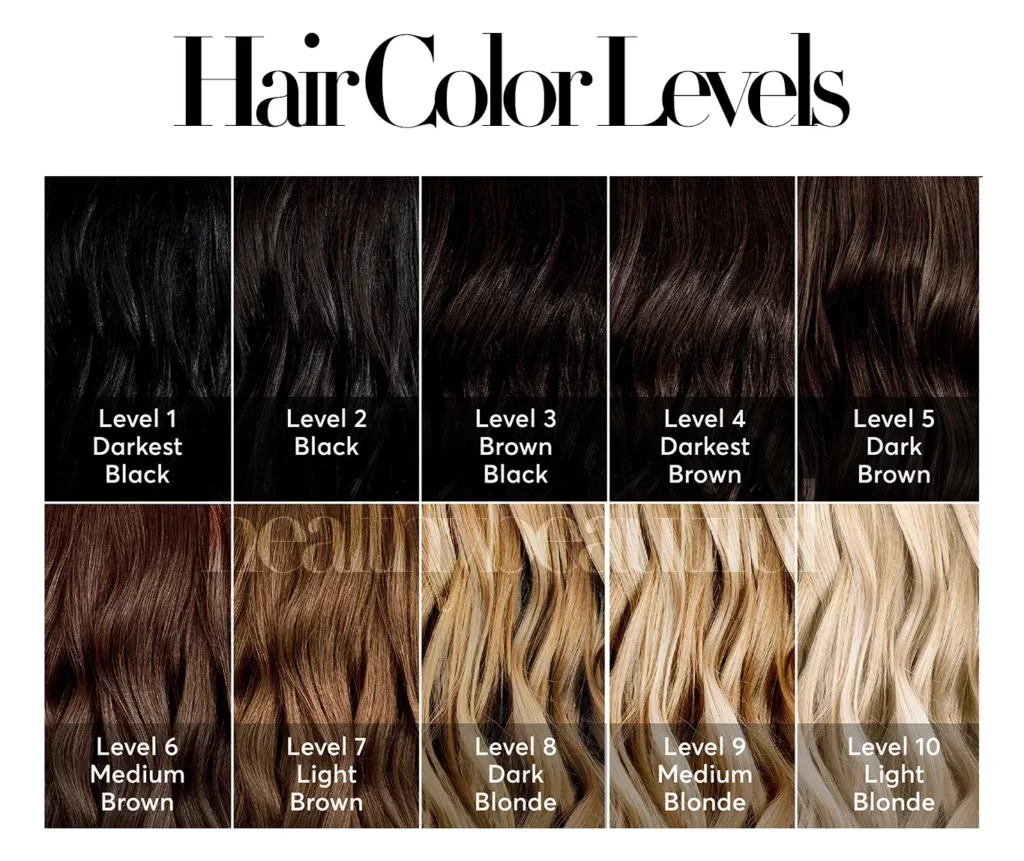
Hair color can vary not only from person to person but also within different strands of hair on the same individual. It's possible for one person to have different amounts of melanin in their hair.
Factors such as genetics, age, and environmental influences can contribute to these variations. For example, as people age, they may experience changes in the amount and distribution of melanin in their hair, leading to graying or changes in color.
These differences across various areas of your body can impact the results of your laser hair removal treatments, including patchy hair re-growth.
Here's what you should know:
- Differential absorption of light – IPL works by emitting light energy that is absorbed by the melanin in the hair follicle. However, not all hair follicles contain the same amount of melanin. Areas with a mix of darker and lighter hairs can respond differently to IPL treatments. The darker hairs are disabled more easily while lighter hairs remain unaffected. This uneven response based on natural hair color variation across the body commonly causes patchy regrowth patterns. Certain areas like the bikini line and arms are more prone to a blend of hair colors, and at higher risk of patchiness.
- Variable response to treatment – Different types of hair follicles or areas of the body may respond differently to IPL treatment. Some areas may require more treatment sessions or higher energy levels than others, resulting in patchy hair regrowth.
- Hormonal or seasonal changes can alter hair color over time, impacting how well IPL works. Newly sprouted lighter hairs may be missed.
Video: 1 Year Update: Honest Review of Braun Silk Expert Pro 5 Portable IPL Hair Removal
Solutions:
- Focus on achieving maximal reduction in coarse dark hairs first. Expect to need more sessions to clear finer hairs.
- Consider combination treatments – IPL first to disable dark hairs, followed by laser or electrolysis for lighter hairs.
- Schedule IPL treatments during cooler months when darker hair growth is denser. Avoid sun exposure that lightens hair.
Devices with Additional Professional Controls + Body Part & Hair Color Specs: ViQure EpiPro
Devices with Body Part Specifications:JOVS X 3-in-1 IPL, Bosidin Pioneer-Pro, JOVS Venus Pro, Bosidin Pioneer
Genetic or Hormonal Factors
Factors: Biological
It's also important to address any underlying hormonal imbalances that may be contributing to excessive hair growth.
Hormonal changes or genetic predisposition can sometimes make certain follicles resistant to IPL and lead to patchy regrowth.
Areas prone to hormonal hair growth may be especially difficult.
Here's how these factors can impact IPL treatments:
Genetic factors
Genetic factors can play a role in hair growth patterns and density, as well as the responsiveness of hair follicles to IPL treatment. For example, some individuals may have more resistant hair follicles that require higher energy levels or more treatment sessions to achieve desired results.
Hormonal Influences
Hormonal fluctuations, such as those associated with pregnancy, menopause, or hormonal medications, can affect melanin production and skin sensitivity, making the skin more susceptible to adverse reactions following IPL treatments. For example, hormonal changes during pregnancy can exacerbate melasma or trigger the development of new pigmentation issues, which may complicate IPL treatment outcomes.
If hormonal hair growth causes darker, coarser hair in previously fine areas, IPL results may improve in those regions. However, if hormones stimulate thinner and lighter hairs, those areas may become more resistant to IPL, increasing risk of patchiness.
Skin Healing and Regeneration
Genetic factors can influence the skin's ability to heal and regenerate following IPL treatments. Individuals with variations in genes involved in wound healing, collagen production, or inflammation may experience different rates of recovery and responsiveness to treatment. Genetic predispositions to conditions such as hypertrophic scarring or keloid formation may also affect treatment outcomes and the risk of adverse effects.
Hair Growth Patterns
Genetic factors can influence hair growth patterns and density, which can impact the effectiveness of IPL treatments for hair removal. Individuals with thicker, darker hair may respond more favorably to IPL treatments compared to those with finer, lighter hair. Additionally, genetic variations in hair growth cycles and follicle activity can affect the timing and frequency of IPL treatments required to achieve optimal results.
Age-related Changes
Genetic factors contribute to the aging process, including changes in skin elasticity, collagen production, and hormone levels. These age-related changes can influence how the skin responds to IPL treatments, affecting treatment outcomes and the risk of complications such as skin laxity or textural irregularities.
Solutions:
- Adjustments to IPL settings may be necessary based on changes in hair density, thickness, color, and re-growth due to genetics or hormones, in order to achieve continued good results throughout various treatment sessions.
- Those prone to hormonal hair changes may require IPL maintenance treatments more often normal for continued overall hair reduction.
- See a doctor to test hormone levels and address any imbalances contributing to unwanted variable hair growth. This can optimize IPL treatment response.
- Consider alternative treatments – If IPL treatment is not effective due to genetic or hormonal factors, consider alternative hair removal methods, such as electrolysis or laser hair removal.
Related: The Best Home Laser & IPL Hair Removal: Esthetician’s Choice
Tips to Prevent Patchy Regrowth
To prevent patchy regrowth after IPL (Intense Pulsed Light) hair removal, consider the following tips:
- Follow the recommended treatment schedule. Follow the recommended treatment intervals consistently, allowing optimal timing for disabled hairs to shed and regrow for the next session.
- Ensure complete coverage of the treatment area. Pay attention to overlapping sections to avoid missing spots, promoting uniform exposure to the IPL light and reducing the risk of uneven regrowth.
- Proper Handpiece Positioning. Hold the handpiece at the correct angle and distance from the skin. Incorrect positioning can lead to inadequate or excessive light energy in certain areas, causing uneven treatment and potential patchy regrowth.
- Use the appropriate energy level. Using the appropriate energy level for your skin type and hair color is crucial for achieving effective hair removal and minimizing the risk of patchy regrowth. Start with a lower energy level and gradually increase as needed.
- Adjust Settings for Individual Needs. If your device allows customization, adjust settings based on your skin type, hair color, and sensitivity. Tailoring the settings to your individual characteristics enhances the effectiveness of the treatment and minimizes the chance of patchiness.
- Perform Patch Tests. Before full treatments, conduct patch tests to assess your skin's reaction to the IPL device. This helps identify any sensitivities and ensures a safer and more effective hair removal process.
- Address Hormonal Changes. Be mindful of hormonal fluctuations, such as those during pregnancy or menopause, as they can influence hair growth. Thoroughly evaluate the treatment area first to identify any differences in hair texture, density, or color. Adjust IPL settings and your treatment plan accordingly during such periods to maintain consistent results.
- Follow Pre- & Post-Treatment Care. Adhere to recommended post-treatment care. Proper aftercare promotes skin health and supports the effectiveness of IPL hair removal, reducing the likelihood of patchy regrowth.
- Exfoliate regularly. Regular exfoliation can help remove dead skin cells and prevent ingrown hairs, which can contribute to patchy regrowth. Use a gentle exfoliating scrub or brush to exfoliate the treatment area once or twice a week.
- Avoid waxing, plucking, or threading. These can remove the hair from the root, which can disrupt the hair growth cycle and increase the risk of patchy regrowth. Avoid these hair removal methods for at least four weeks before and after IPL treatment.
- Avoid sun exposure. Avoid sun exposure and tanning between sessions which can lighten hair color and impact IPL effectiveness. Sun exposure can increase the risk of patchy regrowth and other skin complications after IPL treatment. Use a broad-spectrum sunscreen with at least SPF 30 to protect your skin.
It's important to be patient and realistic about the results of IPL treatment. Multiple treatment sessions may be required to achieve desired results, and some hair follicles may be more resistant to treatment than others.
By incorporating these tips into your hair removal routine, you can optimize the effectiveness of IPL treatments and minimize the risk of patchy regrowth, ensuring smoother and more consistent results over time.
Correcting Patchy Hair Growth
Here are some tips if you already have patchy regrowth after IPL hair removal treatments:
- First, identify the areas of patchy regrowth and determine the underlying cause. Was it due to inconsistent application, low settings, missed spots, or device issues? Understanding the reason will help guide next steps.
- Go over any missed patches that received inadequate light treatment. Use the proper settings and techniques to “patch treat” and try to better cover those areas.
- Examine your device for any malfunctions and get it serviced or replace parts as needed. Patchiness could indicate problems with light emission consistency.
- Adjust your technique going forward – maintain firm skin contact, use ideal overlap between pulses, and double-check for even coverage.
- Consider switching to a more powerful hair removal device or professional laser hair removal if patchiness persists. IPL devices average 6-7 J/cm2 and have limitations for coarse, dense hair. Diode laser devices like the ViQure EpiPro and Tria 4x can reach up to 20-22 Jcm2.
- Be patient and allow a few more treatments for the lagging areas to properly catch up. Stick to the recommended treatment intervals.
- Use post-IPL gel or creams and avoid sun exposure which can lighten hair color and impact IPL effectiveness.
With time and consistency using proper technique, most cases of patchy IPL regrowth can be corrected for smoother results.
FAQ
References:
- Koch, D., Pratsou, P., Szczecinska, W., Lanigan, S., & Abdullah, A. (2015). The diverse application of laser hair removal therapy: a tertiary laser unit's experience with less common indications and a literature overview. Lasers in medical science, 30, 453-467.
- Gan, S. D., & Graber, E. M. (2013). Laser hair removal: a review. Dermatologic surgery, 39(6), 823-838.
- Town, G., Ash, C., Dierickx, C., Fritz, K., Bjerring, P., & Haedersdal, M. (2012). Guidelines on the safety of light‐based home‐use hair removal devices from the European Society for Laser Dermatology. Journal of the European Academy of Dermatology and Venereology, 26(7), 799-811.
- Hession, M. T., Markova, A., & Graber, E. M. (2015). A review of hand-held, home-use cosmetic laser and light devices. Dermatologic Surgery, 41(3), 307-320.
- Buckley, D. (2021). Hair Loss and Hair Growth. Textbook of Primary Care Dermatology, 347-359.


Leave a Comment